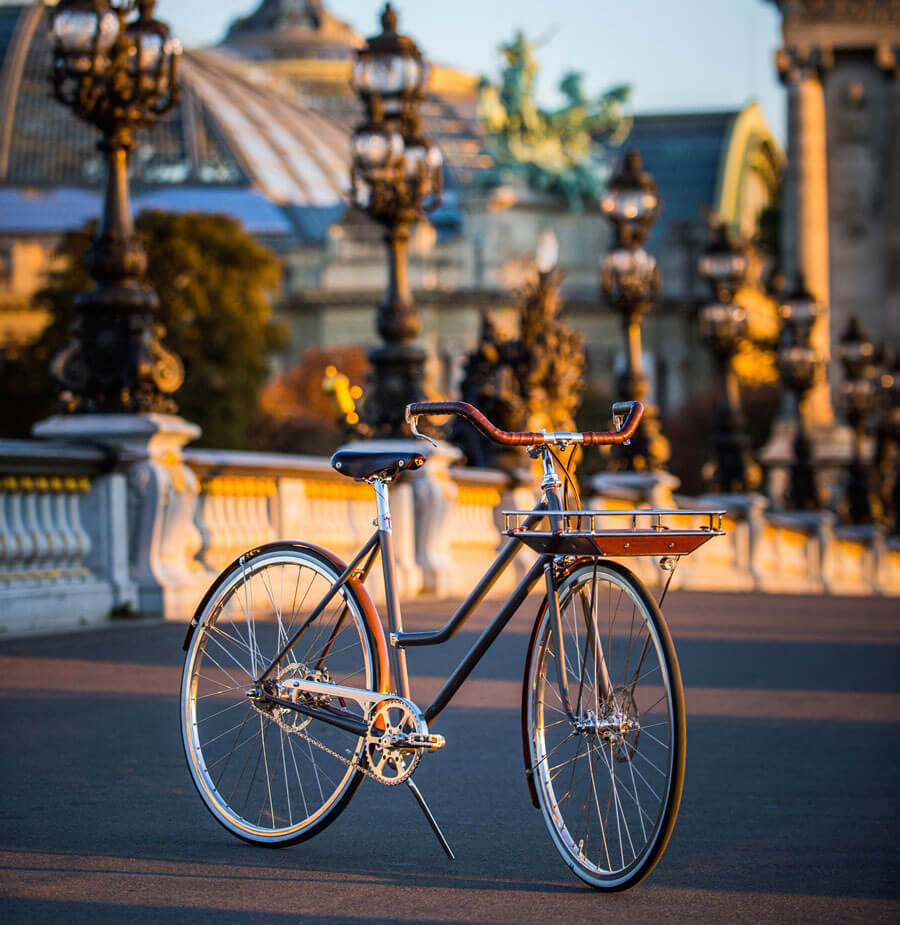Interview with Frédéric Jastrzebski, CEO, Maison Tamboite
Tucked away in a quiet Paris courtyard, a revival is taking place. Luxury bicycle brand Maison Tamboite had closed down in the 1980s after decades of acclaim and an illustrious customer list including Marlene Dietrich, Sara Bernhardt, and Edith Piaf. After successful corporate careers, the great-grandsons of founder Léon Leynoud are now resurrecting the legacy and selling their famous custom-made bikes once more.
In a conversation with Tharawat Magazine Frédéric Jastrzebski, fourth-generation family member and current CEO of Maison Tamboite, explained the challenges in reviving a legacy, the ins and outs of bicycles as a product and possible handover to the next generation.
How did your career path lead you back to your family’s legacy?
I am part of the family business on my mother’s side, so I think I was not ‘programmed’ to take over the company. I went into finance as an international equity broker, and my brother is currently a lawyer at a major luxury brand in France.
But we both all felt the need to pay our dues. That’s a feeling that was transmitted through our family values. Even though the family business had closed down in the 80s, we still felt that sense of heritage. We wanted to restore Maison Tamboite to its former glory.
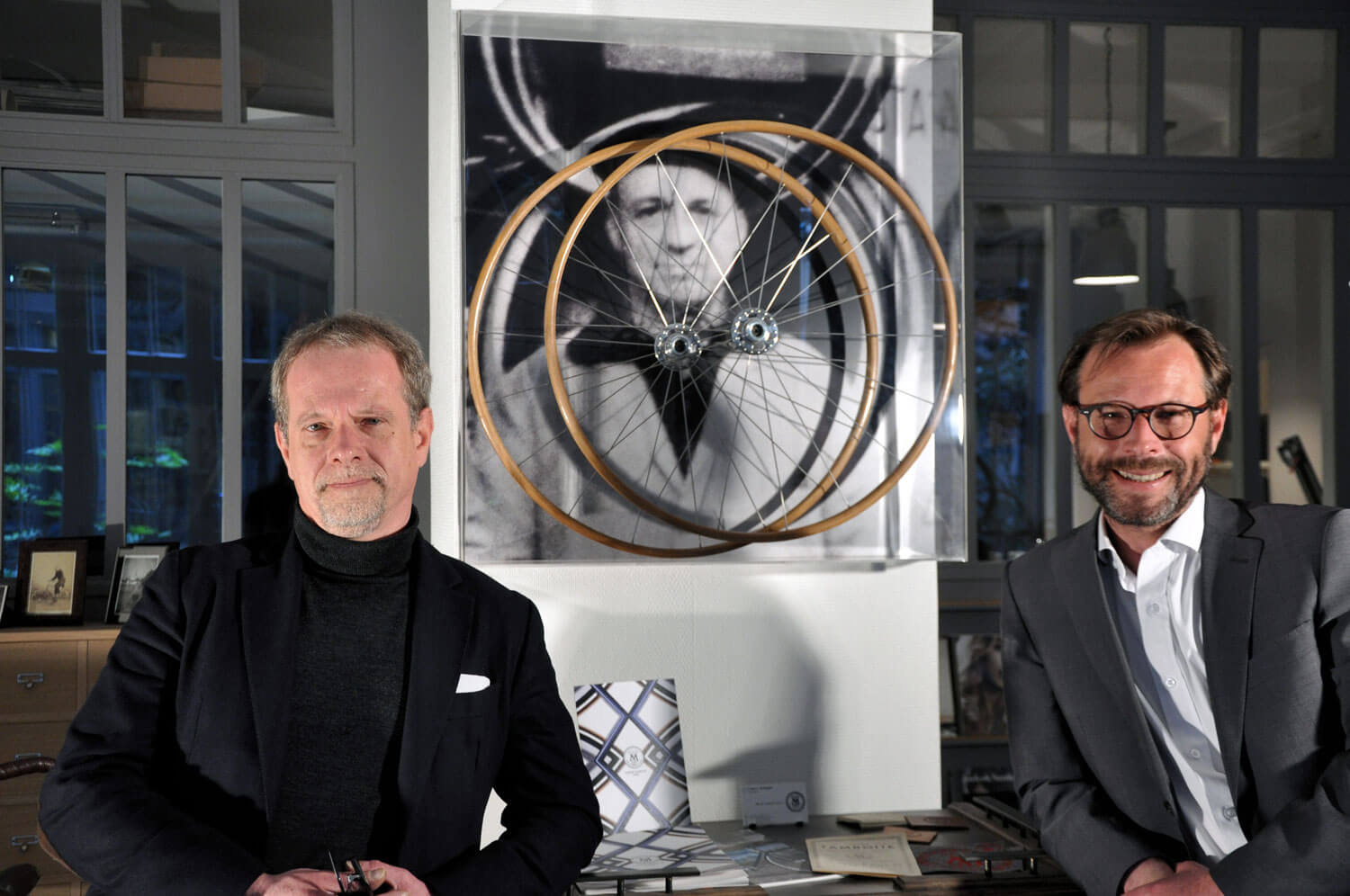
What were the greatest challenges you encountered?
We were the owners of a brand that had all but disappeared. Our family business was just a memory. The industry in Europe had been almost completely destroyed in the 70s and 80s when low-cost Asian bicycle brands entered the market.
Reading our great grandparents’ diaries we rediscovered the essence and the spirit of the Maison Tamboite brand and we wanted to revive that emotion and experience for customers. We wanted to go back to producing wonderful, beautiful bicycles that would just make people happy.
How did you go about doing this?
We began to formulate the vision using the legacy – the sense and the meaning of the brand and of the work of our ancestors. We had to think of every little detail.
Luxury is always the main aim; we thought long and hard about the new collections we wanted to design. After that, it was a case of really hard work – and it still is. Staying focused is paramount. But once you have a vision and the ability to express it and to share with others, finding the path that will take you there is the easy part.
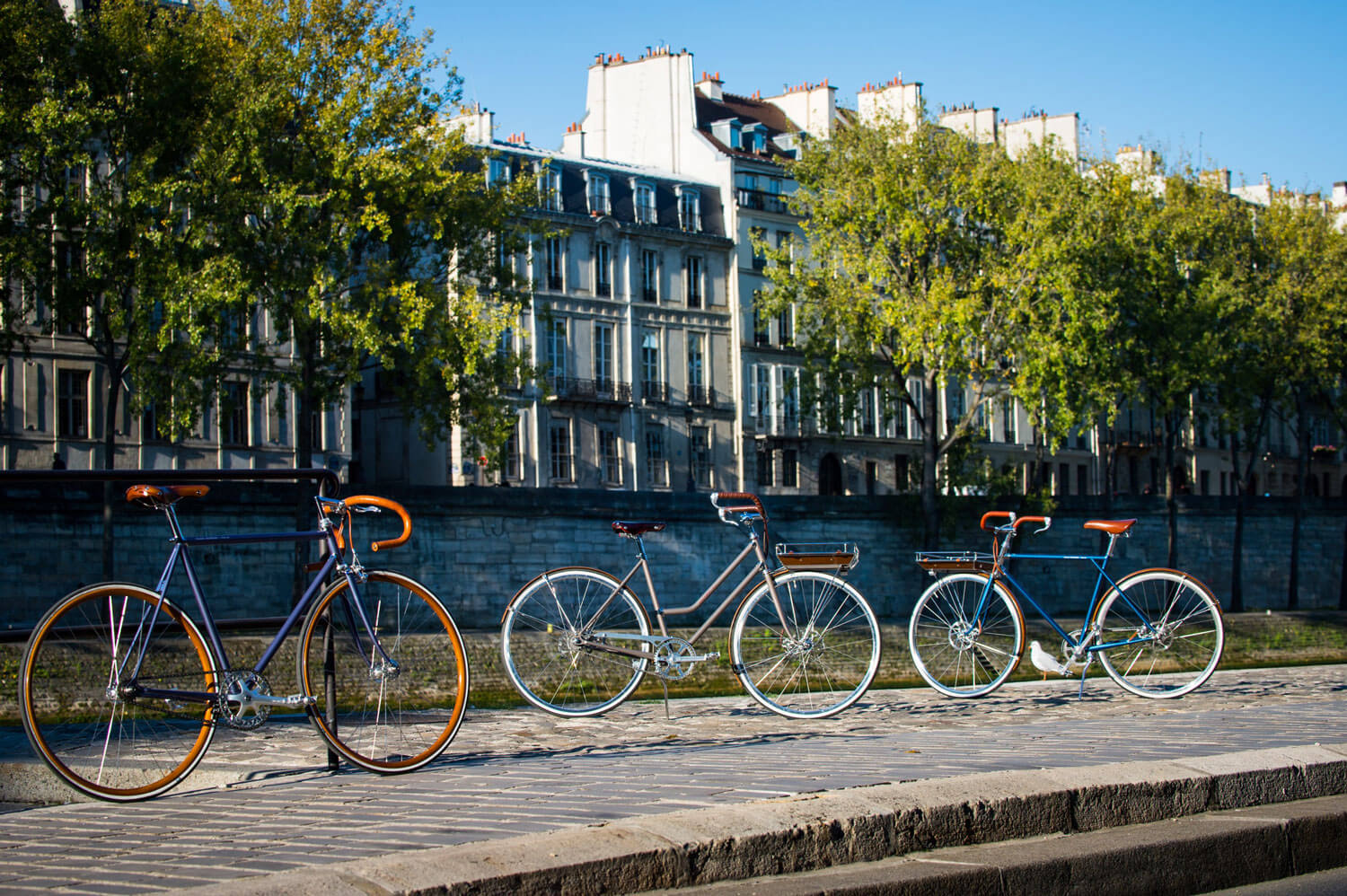
How did you find the talent to help you undertake this?
You have to find the right people even though their talents might be hidden. The skills we needed had disappeared over 20 years ago. So it was about finding people with raw talent who had the ability to learn those skills. And we did, but mostly by chance!
Are you experiencing the same joy and fulfilment as in your previous professions?
My brother and I don’t talk about it much, but I think we’re both happier. Our wives are also involved, so we’re really back to being a family business.
Our cousins are also welcome to come to join us if they wish to in the future. The young generation is also getting more and more active. That feeling of belonging is there in all of us. We really feel like the custodians of the brand, keeping it safe for the next generation.
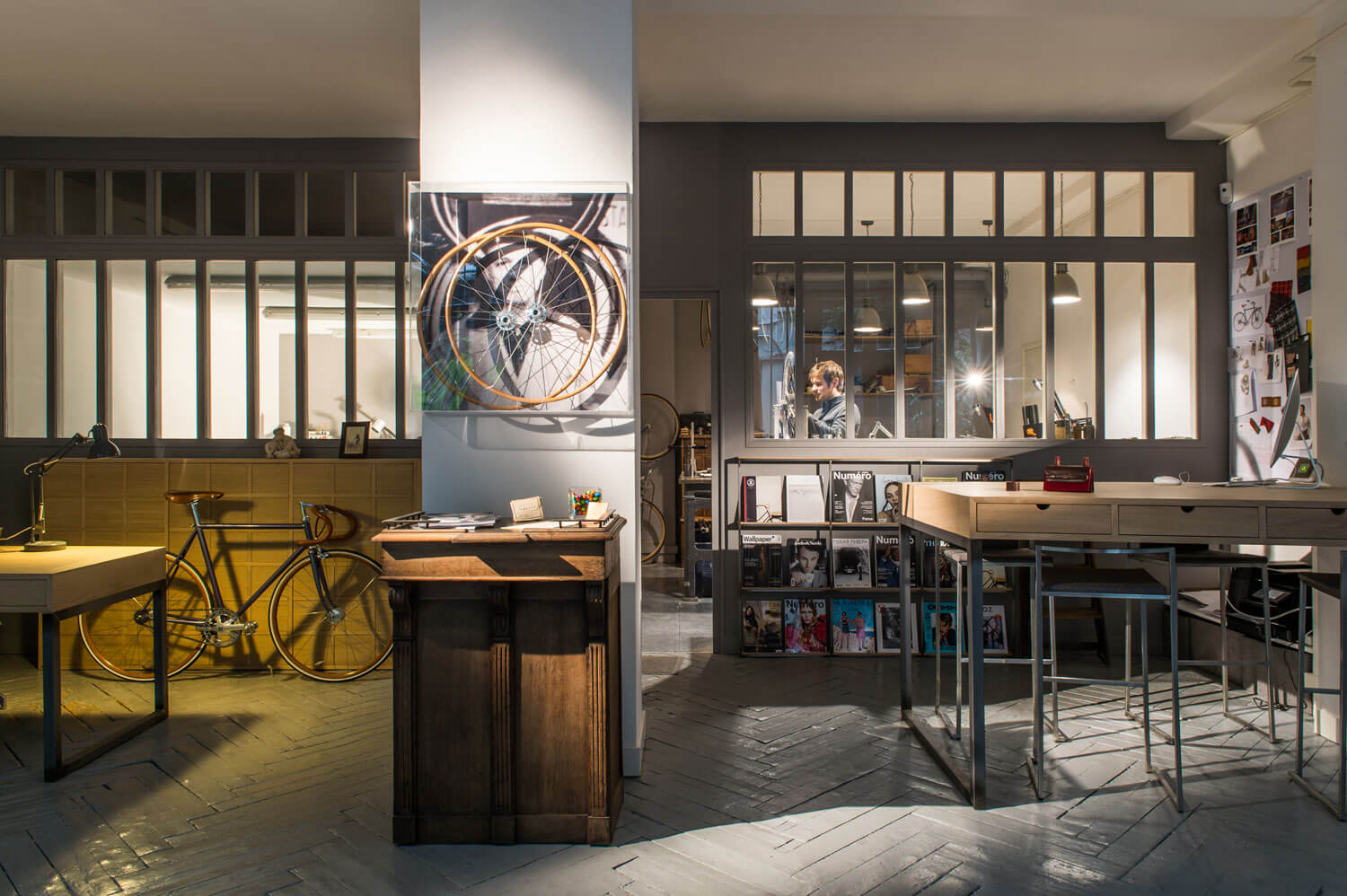
[ms-protect-content id=”4069,4129″]
What is the process of designing a unique bicycle?
The design starts with the emotion we want to evoke in the customer. We see the bicycle not only as a means of transportation; we see it as a source of experiences and emotions. Reproducing that feeling in an object is an art. That’s something that has to be created through the design, the workmanship, the materials and the overall quality.
We draw a lot of inspiration from the luxury watch industry, aviation and other trades of precision. We express ourselves through the use of materials. For the bicycle, we like to work with steel; it’s very technical but can also express the line and form in a framework. We also use leather and wood, bringing materials together into an elegantly designed end product.
Also because it is a craft, we have to make sure it carries the personality of the craftsman who has been working on it. That’s also part of the process. We have to make sure that each and every little screw, every little piece we use will be treated in a consistent way.
We want our clients to have a great experience with our bicycles. Each one is tailored to the body type of the customer. We start with a physical analysis and then make everything fit. And of course, since our bicycles have electrical engines, we also use advanced technology, and we make sure that flows into the design as well.
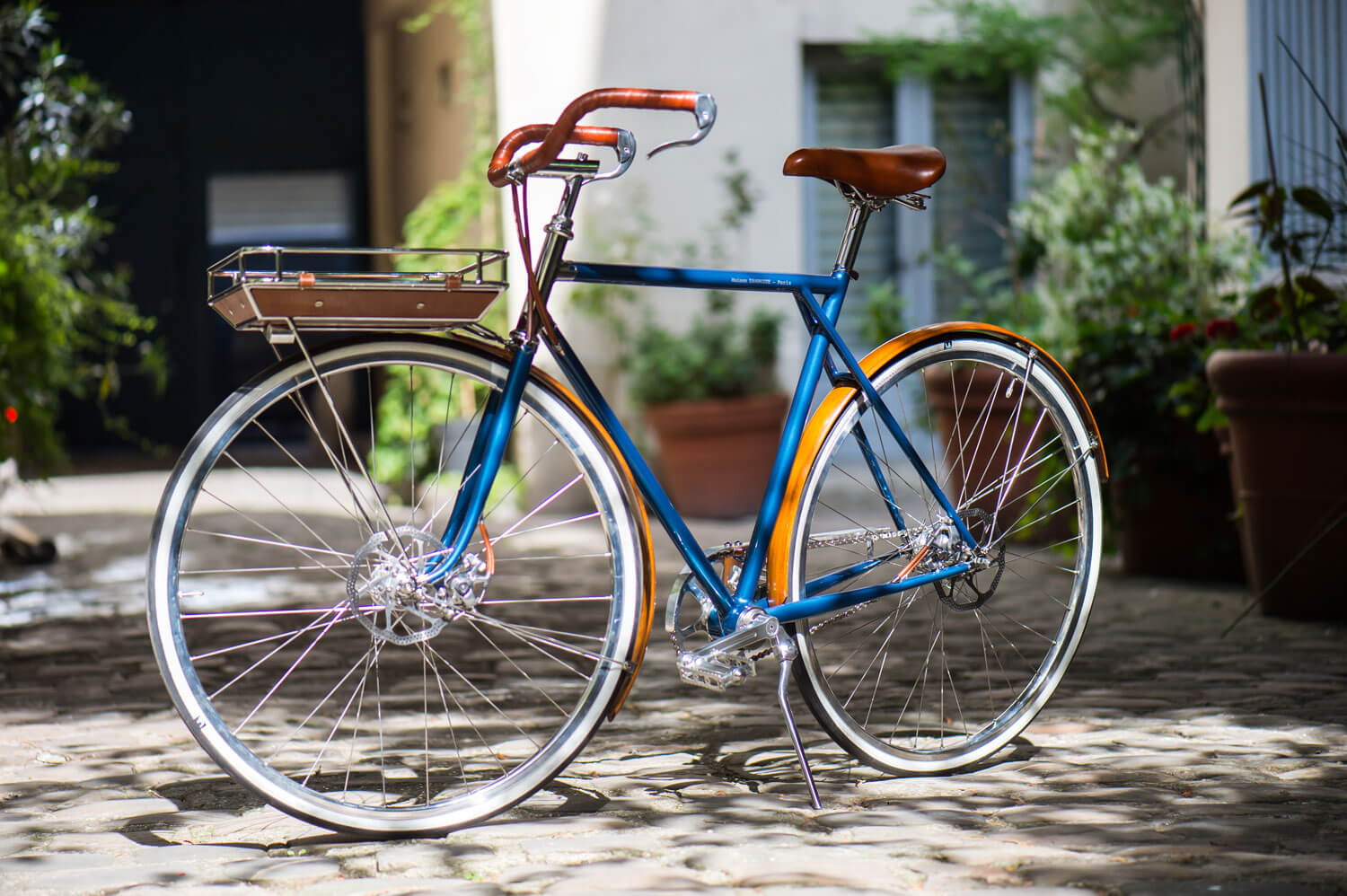
Why do people buy luxury bicycles?
You could also ask why do people buy art or sports cars! A lot of people like to have a personal relationship with the objects they own. It makes them feel special. It has a lot to do with pleasure; it has a lot do with the way they see themselves. Sometimes I’m described a producer of toys for boys; big boys. And mostly that’s true.
What is the luxury bicycle market like?
It’s a very complex market because you are dealing with two different worlds: one is the bicycle industry the other is the luxury sector. The bicycle market is showing huge demand, particularly for electrical bikes. The luxury industry is quite volatile at the moment. We stand in the overlap between those two worlds.
A bicycle is the latest addition to the luxury sector. They’re for people who want to live a singular life and people who can afford to do so. You use a bicycle in a very simple, pleasant way, but you can also do it with style and elegance. It’s a very Parisian product.
Are your children interested in the revival of Maison Tamboite?
They’re very supportive. My brother’s children are very young still. Mine are a bit older, but it’s still early days. The one thing that we don’t want to do is to put a weight on their shoulders. It’s an option that is open them. We just want to inspire them by setting a good example. We can show them that no matter where you are in your career, it’s never too late to join the legacy.
Tharawat Magazine, Issue 30, 2016
[/ms-protect-content]


